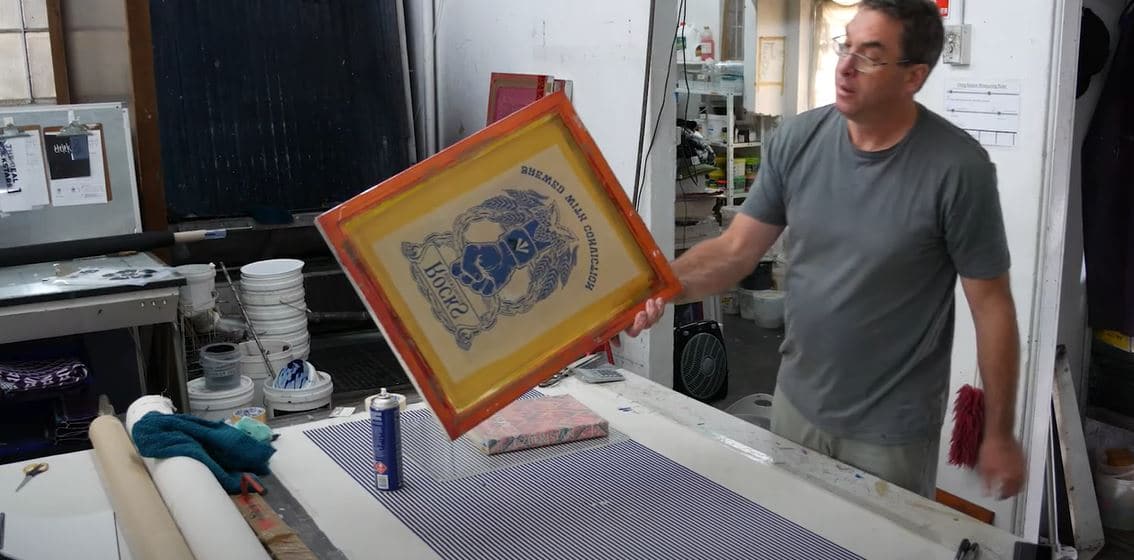The Essential Guide to Recognizing Screen Printing and Its Versatile Makes use of
Screen printing has a rich background that dates back to old times, advancing into an innovative technique made use of throughout numerous industries today. This guide checks out the ins and outs of the screen printing procedure, describing its applications in home, fashion, and marketing décor - 10:9 Design Abilene. Comprehending these basics can open up creative potential for both artistic and industrial projects. The complying with sections will reveal important tips and techniques to enhance one's screen printing endeavors
The History of Screen Printing
Screen printing has origins that trace back centuries, its development shows the technical and imaginative advancements of various cultures. Originating in ancient China, the method was at first used for embellishing fabrics and later infect Japan, where it ended up being indispensable to Ukiyo-e woodblock printing. The technique shifted to Europe in the 18th century, where it got popularity amongst artisans and commercial printers. The development of image emulsion in the 20th century reinvented screen printing, enabling for more elaborate styles and better efficiency. Musicians like Andy Warhol even more thrust its popularity, making use of the tool to create famous works that combined commercialism and fine art. By the late 20th century, screen printing had actually established itself as a versatile strategy, utilized in vogue, marketing, and art. Today, it remains to develop, integrating electronic technology and expanding its applications throughout numerous industries.
The Screen Printing Refine Explained
Screen printing transforms artistic visions right into concrete styles through a series of exact steps. Originally, an image is produced and afterwards moved onto a screen, usually made of great mesh textile extended over a framework. A light-sensitive emulsion is related to the screen, which is exposed to light, solidifying in locations not covered by the image. After rinsing the unhardened emulsion, a pattern is created.
Next, the screen is put over the substrate, whether it be textile, paper, or another material. Ink is after that pushed through the open locations of the pattern making use of a squeegee, transferring the layout onto the substratum listed below. This process can be repeated for multiple shades, calling for different displays for each and every tone. The published product is cured making use of warm to guarantee the ink sticks correctly, resulting in a durable, dynamic layout all set for use.
Sorts Of Screen Printing Techniques

In addition, specialty methods, such as discharge screen printing, remove color from the fabric to produce softer prints, while foil screen printing applies metal foil to attain a shiny coating (10:9 Design Company). Each strategy provides distinctive attributes, satisfying various innovative needs and production scales, eventually increasing the opportunities within the screen printing domain name
Applications of Screen Printing in Numerous Industries

Furthermore, the signs and advertising industries make use of screen printing for creating appealing display screens and banners. This technique permits vibrant colors and complex layouts that record focus. In electronic devices, screen printing is employed for using conductive inks to circuit boards, necessary for component connections. The home style market accepts screen printing to produce distinctive designs on textiles and wall art. In general, screen printing functions as an essential device throughout varied areas, boosting items with individualized and aesthetically enticing graphics.
Tips for Effective Screen Printing Projects
While undertaking a screen printing task, mindful interest to detail can significantly boost the last end result. Initially, picking high-grade products is essential; this includes the screen, inks, and substrates. Making use of ideal mesh matters can impact ink deposition and detail resolution. Preparation is equally important; thorough cleansing of displays and proper direct exposure times ensure crisp prints.
Next, exact enrollment is essential for multi-color prints. Making use of positioning tools can aid accomplish accurate layering. Additionally, testing prints on scrap materials before production assists determine potential concerns without losing resources.

Frequently Asked Questions
What Products Are Ideal for Screen Printing on Textile?
Cotton and polyester blends are excellent for screen printing on textile because of their toughness and ink absorption. Furthermore, specialized materials like silk or canvas can create distinct textures and coatings, boosting the general style quality.
How Do I Tidy and Maintain Screen Printing Tools?
To preserve and clean up screen printing equipment, one should routinely wash screens with ideal solvents, evaluate squeegees for wear, lubricate relocating components, and store all items in a completely dry, dust-free atmosphere to prolong their life-span.
What Are the Ecological Effects of Screen Printing?
Screen printing can have significant ecological influences, including chemical waste from inks and solvents, water use during cleansing procedures, and power consumption. Eco-friendly materials and sustainable methods are vital for reducing these negative results.
Can Screen Printing Be Done in the house Efficiently?
Screen printing can be effectively done at cardboard sign printing home with the best materials and strategies. Enthusiasts can create top quality prints, though success depends on their skill degree, equipment, and understanding of the procedure involved.
What Are the Costs Related To Starting a Screen Printing Business?

Starting a screen printing company entails expenses for devices, materials, and work space. First costs typically range from a couple of hundred to several thousand bucks, relying on the range, quality of equipment, and preferred production capacity.
Screen printing has a rich history that dates back to old times, developing right into an innovative strategy used throughout various industries today. One more technique, rotary screen printing, utilizes round displays, promoting continuous printing on material rolls, consequently boosting efficiency for large-scale manufacturings. Additionally, specialty techniques, such as discharge screen printing, eliminate dye from the fabric to create softer prints, while aluminum foil screen printing uses metal aluminum foil to accomplish a glossy surface. In the style industry, screen printing is commonly used to develop lively designs on clothing, allowing brands to showcase their unique designs. Cotton and polyester blends are excellent for screen printing on textile due to their longevity and ink absorption.